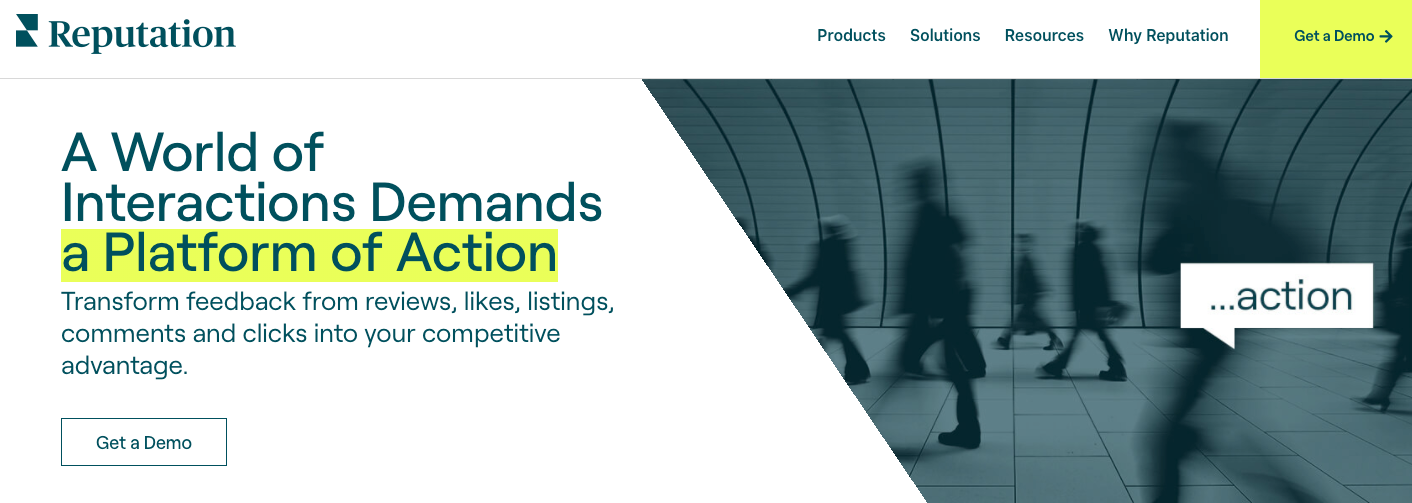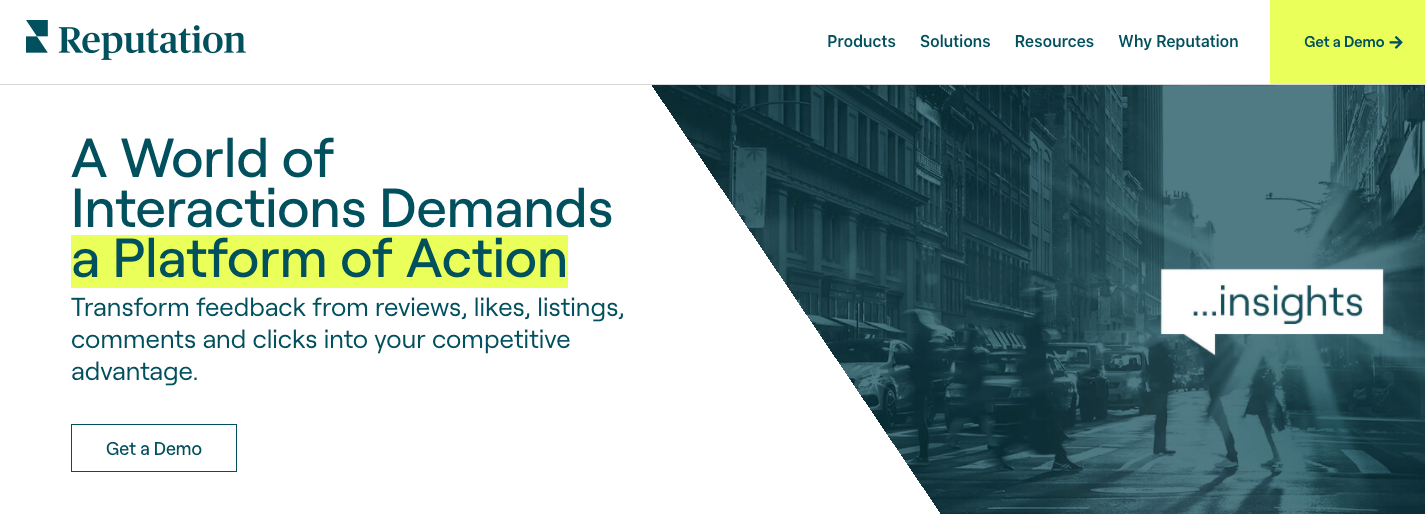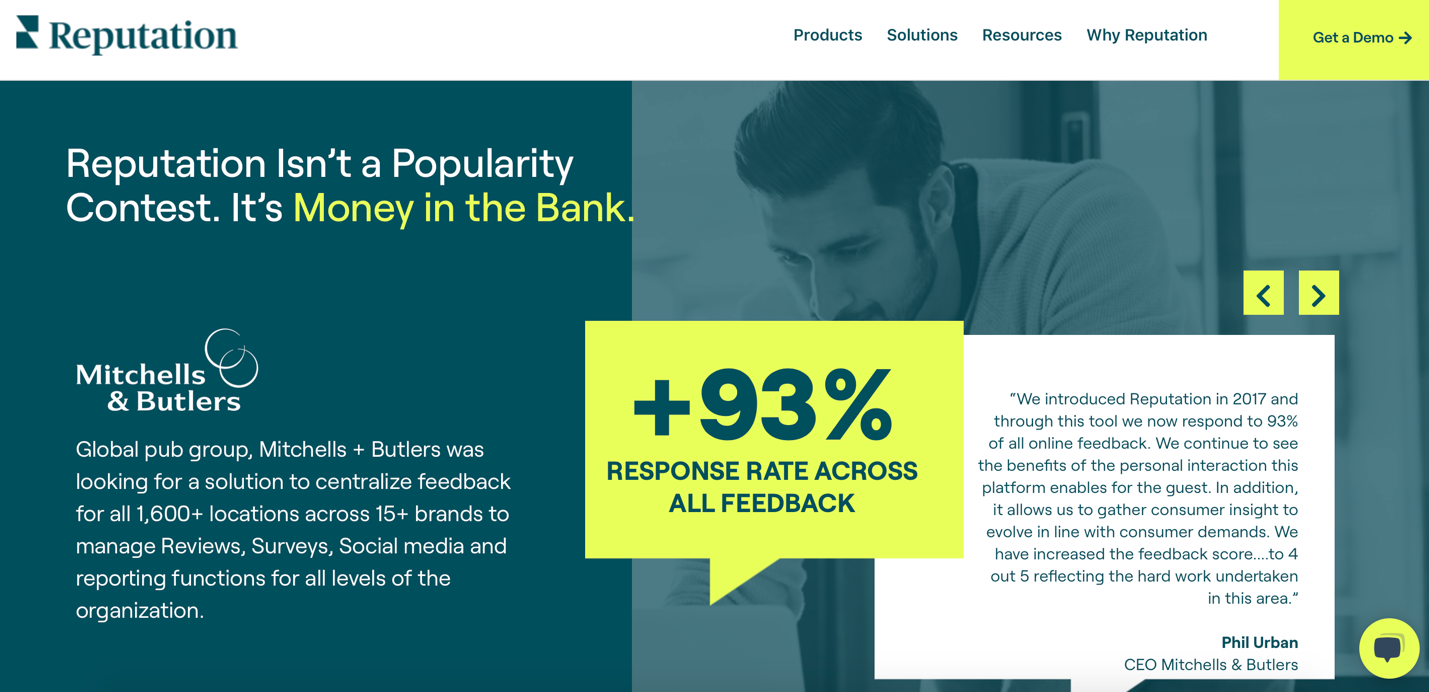The successful rebrand of a company is daunting. It takes time. Support. Energy. Money. Thoughtful leaders. The right players. And, just as importantly, a story. The Reputation rebrand has been an exciting journey, as we redefine our company narrative. As anyone who has done a rebrand can tell you, launch day is just the start. The real work begins afterward, when you begin to build visibility and emotional trust with your customers, employees, and all stakeholders who experience your brand. And sharing our narrative through content is crucial to this journey. Here are some lessons we learned as we completed the rebrand of Reputation that was announced recently.
Stop messaging at the margins
One of the pitfalls of rebranding is to worry too much about how competitors tell their stories. The more you focus on competitors, the more you give them agency to tell your story. We needed to be careful to avoid refreshing our corporate story in response to how competitors describe themselves. We needed to stay focused on who we are and what we do in context of how our customers’ needs have evolved. We knew our business had fundamentally changed. The days had long ended when reputation management meant using customer ratings/reviews to improve a company’s SEO. Today our customers are using feedback to improve every aspect of their businesses, from operations to the customer experience. So we needed to re-examine how we talk about ourselves amid this shift. Once we focused on our own story and how we help our customers improve their businesses through customer feedback, we rallied around the notion of feedback fueling progress. Once we did this, we found our north star.
A .com Tells A Thousand Words
For years, we were known as Reputation.com. We decided that going forward, however we defined our brand, we needed to formally drop the “.com” from our name. Sounds like a small change – but it’s important. Our business has changed in another big way: customers share feedback that shapes a business’s reputation all over the digital world – on Facebook, Google My Business, industry review sites, and more. The website remains important for many businesses to solicit formal customer reviews and publish them – but it’s no longer the center of the reputation universe. We needed to drop the “dot-com” from our name to reflect this reality. “Reputation.com” was right for 15 years ago. But Reputation is the name for today and tomorrow. On its most basic level, reputation is about the beliefs commonly held about an entity, an ethos, an idea, an individual. Its origins are rooted in classical texts. It’s an abstract notion studied at universities. It’s discussed at length in corporate boardrooms. It’s the sum total of all of our impressions and strikes at the core of what we do at Reputation. Related: Tune into the Voice of the Customer to Build Trust in Your Brand We take all customer interactions at scale, from solicited feedback across customer surveys to unsolicited feedback across social media. We take all of those impressions, and data points, and pieces of feedback and help a company understand their reputation . . . but more importantly how they convey it.
Tell a Bigger Human Story through Visuals and Words
Shortening our name doesn’t mean our website is less important. Our website is a home base for our own clients to learn more about us. And at a time when people practically live on Instagram, Snapchat, and TikTok, we needed to make a strong visual impression. That’s why we chose the images for our home page carefully. Check out this carousel of images that greet every visitor:



What do you see? On the surface, two images suggest a blur of people moving, and then a stationary shot of people in an office talking. All the images are bathed in our brand tone. Taken together, these images tell a story. It’s about the way people and brands interact in real life and real time. The swirl of customer feedback happening in the wild that creates a dynamic relationship between people and brands, shaping reputation. And then comes the calm: when we make sense of all that feedback, unstructured and more formal, and recommend to a business how to improve their entire companies through reputation management. Those images crystallize the essence of what we do in a human way. They also offer various ways for a customer or prospect to enter our site and learn more. That way, each image does double duty to bring people into the site – and to tell our story.
Words Matter
Language means everything: from our new tagline, “A world of interactions demands a platform of actions,” to the stories we tell on our site. Those interactions happen between people and brands, with customer reviews forming a direct line of communication. We now discuss reputation management as being about a company taking feedback from people -- namely, customers -- to drive profitable growth, not just accumulating positive reviews. Related: Reputation Score is the Ultimate Measure of Brand Trust

This shift in focus affects all of our content, including insights, our case studies, and every other aspect of our site that delivers on our brand promise. We love it when our clients accumulate positive reviews – but reviews mean even more when a customer learns from them and improves their business. That’s an incredibly important element of our business we didn’t talk about years ago. We do now. Our thought leadership also reflects this shift toward reputation management contributing to stronger business performance, whether through a better patient experience in healthcare or locking in customer loyalty in retail. We still talk about topics that we did when we founded our company, such as SEO, but in a different context now. SEO is a means to an end now: better SEO means more people finding your brand and reviewing you, which leads to a stronger reputation. And all of that centered on the relationship between a person and a brand.
What’s Next?
I think we have an opportunity to shape the way people talk about reputation. I don’t mean invent a new language, but describe our world in a way that reflects how it is evolving. For example, why do people use “listings” to describe a brand’s presence on Google My Business? “Listings” doesn’t quite capture the dynamic nature of Google My Business to attract people searching and convert them to customers. As an industry, we have a lot of work to do. And at Reputation we intend to lead the way forward. Keep Reading: How to Build Brand Trust with Transparency


